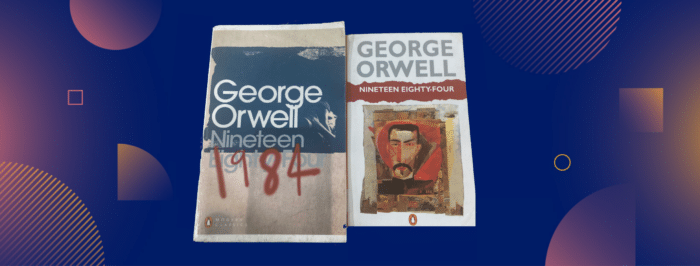Every record has been destroyed or falsified, every book rewritten, every picture has been repainted, every statue and street building renamed, every date has been altered. And the process is continuing day by day and minute by minute. History has stopped. Nothing exists except an endless present in which the Party is always right. (George Orwell 1984).
While Orwell wrote about an ideology being imposed from above on its subjects, the statue toppling movement of 2020 is directed from below. It is an attempt to seize control of the prevailing historical narrative they complain has been imposed upon them by the privileged elites. Regardless, the sanitisation of our History is a worrying trend.
Many (including this author) gave a wry smile at the toppling of Edward Colston’s statue in Bristol in June 2020. Footage of a bronzed Colston being rolled through the streets and dumped into Bristol Harbour seemed an apt response to a man who made his fortune in the slave trade. But as the movement expanded and other statues came under threat my smile waned, somewhat. Indeed I have become decidedly uncomfortable with flagrantly poor historical practice. Footage of the UK government being forced to seal and protect the statue of Winston Churchill in London filled me with a deep unease.
While Churchill is often lauded for his leadership during Second World War, unsurprisingly he was no saint. In addition to the suggestion that an invasion should take place at Gallipoli in 1915, Churchill was also a firm believer in white Anglo-Saxon supremacy. On the subject of the subcontintent he remarked “I hate Indians. They are a beastly people with a beastly religion.” It’s unlikely this quote adorns the plinth upon which his statue rests, but it points to a broader truth – historical figures, like modern ones, are inherently flawed. And many historical figures are a product of their times, with a social context unlike our own. Whoever would think that Churchill was the only advocate of white Anglo-Saxon supremacy in Britain in the 1940s, for example? The point of studying History in its unvarnished form is to challenge ourselves with these complexities. It enlarges our understanding when we consider the foibles and faults of those who have come before us; Ghandi (racist), Kennedy (adulterer and drug addict). Do Ghandi’s racist attitudes as a young man (which he renounced later in life) detract from his achievements in peaceful protest and Indian independence? Should those seeking the removal of Ghandi’s statue in Manchester (yes, that’s actually a thing right now) be successful, simply because our social mores are different to those at the turn of the 20th Century? Should the Jefferson Memorial in Washington DC be torn down and turfed into the Potomac because Jefferson was a slave owner? What if we project forward, and ask in 100 years if those who publicly expressed concern about gay marriage in Australia in 2017 be expunged from our future History, simply because the values of 2017 no longer reflect Australian values in 2117?
The process of History will always seek to understand with as many sources as possible. No historical analysis is made more effective by reducing either sources or perspectives, no matter how uncomfortable they may make us. Studying and engaging with History is hard – deliberately so. It is not a set of black and white alternatives that make us comfortable and sedate – much like life itself.
In Fremantle, Western Australia sits The Explorers Monument, unveiled in 1913. It commemorates three men who were “attacked at night by treacherous natives” and killed in 1864. For decades indigenous communities have complained about the monument, arguing that it presents a biased view of History. Rather than tearing it down and tossing it into the Swan River, the complainants commissioned a new plaque in 1994 and added it to the monument. It argued that “no mention is made of the right of aboriginal people to defend their land or of the history of provocation which led to the explorers’ death”. It now sits beside the 1913 plaque, not in an attempt to alter History, but to help us understand the contested narrative. Others have suggested relocating controversial statues to museums where the contested narrative can be debated into the future. Initiatives like this are harder than simply pulling down a statue, but they’re worth the difficultly lest we end up, as Orwell suggested, stopping History and living in “an endless present in which the Party is always right”.
Mr Scott Sweeney
Head of Humanities and VCE Coordinator


